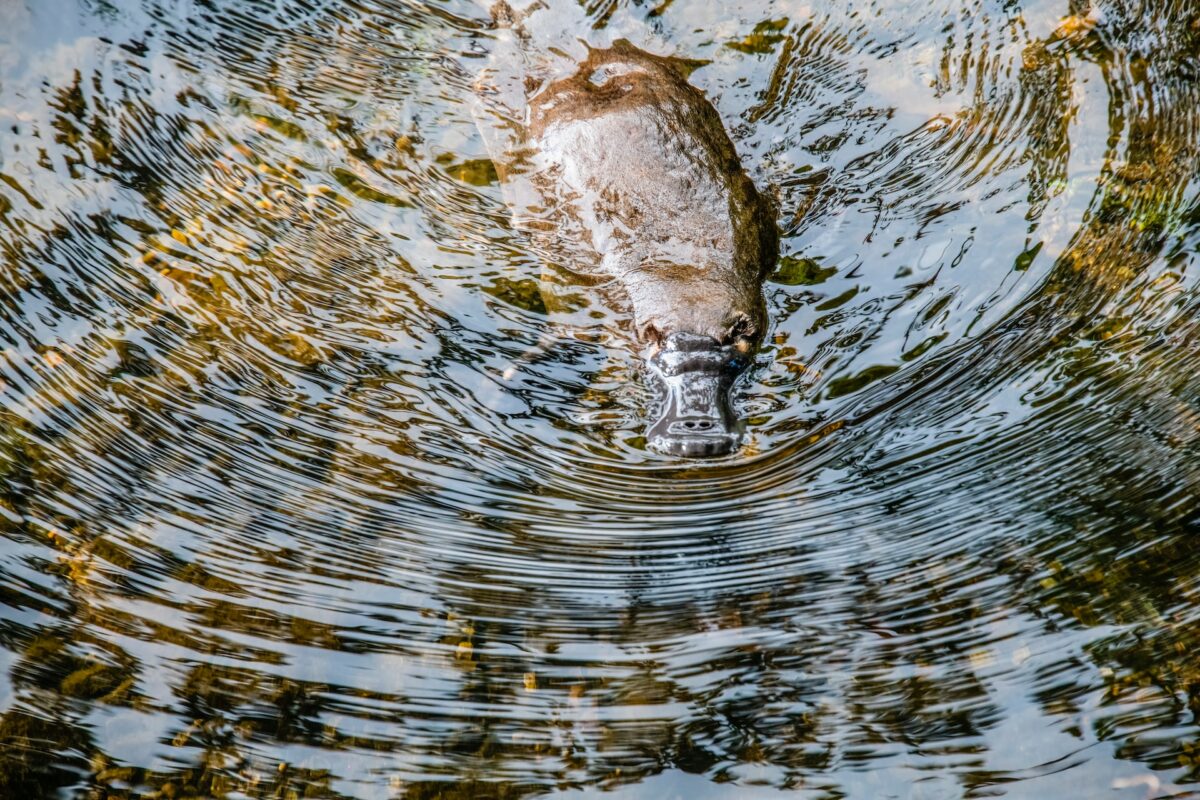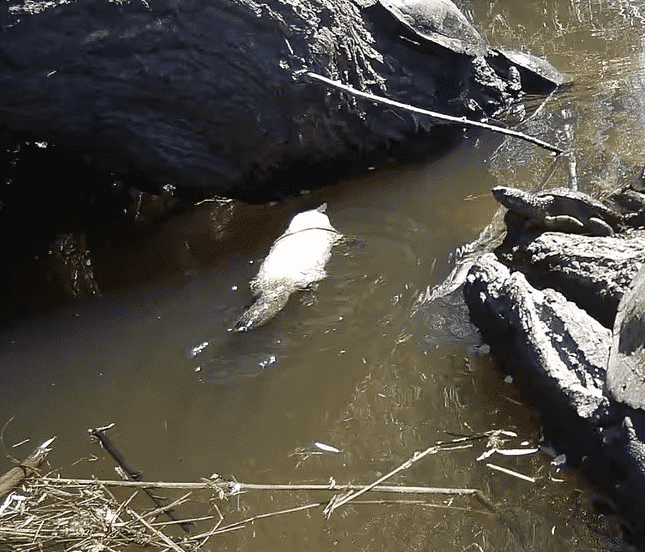In the pristine waters of Northern New South Wales, an extraordinary encounter has left researchers and nature enthusiasts astounded. While on the trail of an endangered turtle species, a group of scientists stumbled upon a true marvel of nature – a white platypus! This remarkable discovery has taken the world by storm. Images and footage of this unique creature have made their way into the pages of scientific journals.
The Enigmatic Encounter
It was early 2021 when the University of New England’s PhD student, Lou Streeting, was conducting fieldwork in the Northern Tablelands of New South Wales. Her primary mission was to locate the elusive western saw-shelled turtles, an endangered species in these parts. Little did she know that fate had something even more incredible in store for her.
As Streeting and her team ventured along the picturesque streams of the Northern Tablelands, they were suddenly greeted by a mesmerizing sight. Emerging just a few meters away from them was a white platypus. A creature so rare that they initially couldn’t believe their eyes. Fortunately, Streeting managed to capture this breathtaking encounter on video, ensuring that there was concrete evidence of this otherworldly sighting.
Since that initial encounter, Streeting and her team have had the privilege of witnessing the white platypus on multiple occasions. Their most recent sighting, just three months ago, confirmed that this remarkable creature is thriving, despite its lack of natural camouflage.
A Platypus with a Point of Difference
White platypuses have been recorded in the past, but this particular one is special. This unique platypus showcases a black bill, black feet, and a touch of color on its tail. Researchers have dubbed it a “leucistic platypus,” and it may very well be the first of its kind ever documented.
Streeting and her team embarked on an extensive search of scientific literature, newspapers, and databases, and they found records of only 12 individual albino or atypically white platypuses dating back to the first documented case in 1835. Their discovery likely represents the sole known record of a leucistic platypus.
A Reminder of the Need for Conservation
This awe-inspiring discovery serves as a poignant reminder of the urgent need to protect the rich diversity of native species that call Australia’s waterways home. While the white platypus may steal the spotlight, it shares its habitat with other remarkable and endangered species. Such as the western saw-shelled turtle.
These environments are not just home to endangered species like the western saw-shelled turtle, but also to other truly unique and extraordinary creatures like this rare white platypus,” Streeting emphasizes.
Platypus Conservation Efforts
The Australian Conservation Foundation (ACF) reports a concerning decline in platypus populations. Despite their distinct and quirky characteristics, these duck-billed, egg-laying, milk-producing, yet nippleless creatures have lost approximately a quarter of their habitat over the past 30 years.
Alarming as this decline may be, it’s exacerbated by the lack of precise data on platypus populations. There are only broad estimates regarding the number of platypuses remaining in the wild. To address this critical knowledge gap, the ACF has joined forces with the University of New South Wales’ Centre for Ecosystem Science. They’re launching a citizen science initiative known as the Platy-project.
This initiative encourages Australians to actively engage in the conservation of platypuses by monitoring their local creeks and rivers. It’s a community-driven effort to bridge the information void surrounding these iconic creatures.

Uncertainty Surrounding Platypus Numbers
Gilad Bino, a conservation ecologist at UNSW, participated in a national assessment of the platypus’s conservation status in 2021. He underscores the significant uncertainty surrounding the platypus population, which could range from 50,000 to 300,000 individuals.
Surprisingly, there’s a lack of national or state-level monitoring frameworks for the species. This is despite evidence of dwindling populations in regions like greater Melbourne. Localized extinctions have already occurred in places such as Brisbane, and the Murray-Darling river system is also witnessing population declines.
In South Australia, they are pretty much extinct except for an introduced population on Kangaroo Island, and even they’ve been impacted by bushfires and drought,” Bino notes. “I don’t think platypuses are going to disappear – and I hope I’m right – in the next several decades. But what I do fear is that for many people across Australia, they’re going to see them disappear from their local rivers.”
In Conclusion
The discovery of a white platypus in Northern New South Wales is a testament to the hidden wonders of our natural world. It reminds us of the urgent need to protect and preserve the unique and extraordinary creatures that grace our waterways. With platypus populations in decline, initiatives like the Platy-project are essential in bridging the information gap and ensuring the continued existence of these iconic Australian animals.
As we celebrate the existence of this leucistic platypus, let us also celebrate the rich biodiversity of Australia’s waterways and work together to safeguard the future of these remarkable species.
Up next:
Watch: Man Hand Feeding & Playing With A Friendly Platypus
Join our Forum for free today!

- The Kleptomaniac Cat That Rules Houston - July 20, 2024
- Elephant Makes a Lifelong Friend at Sanctuary in Tennessee - July 14, 2024
- Evidence For World’s Oldest Fossilized Forest Discovered in New York - July 11, 2024

